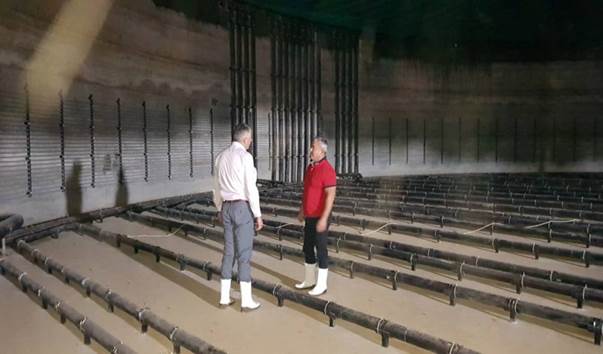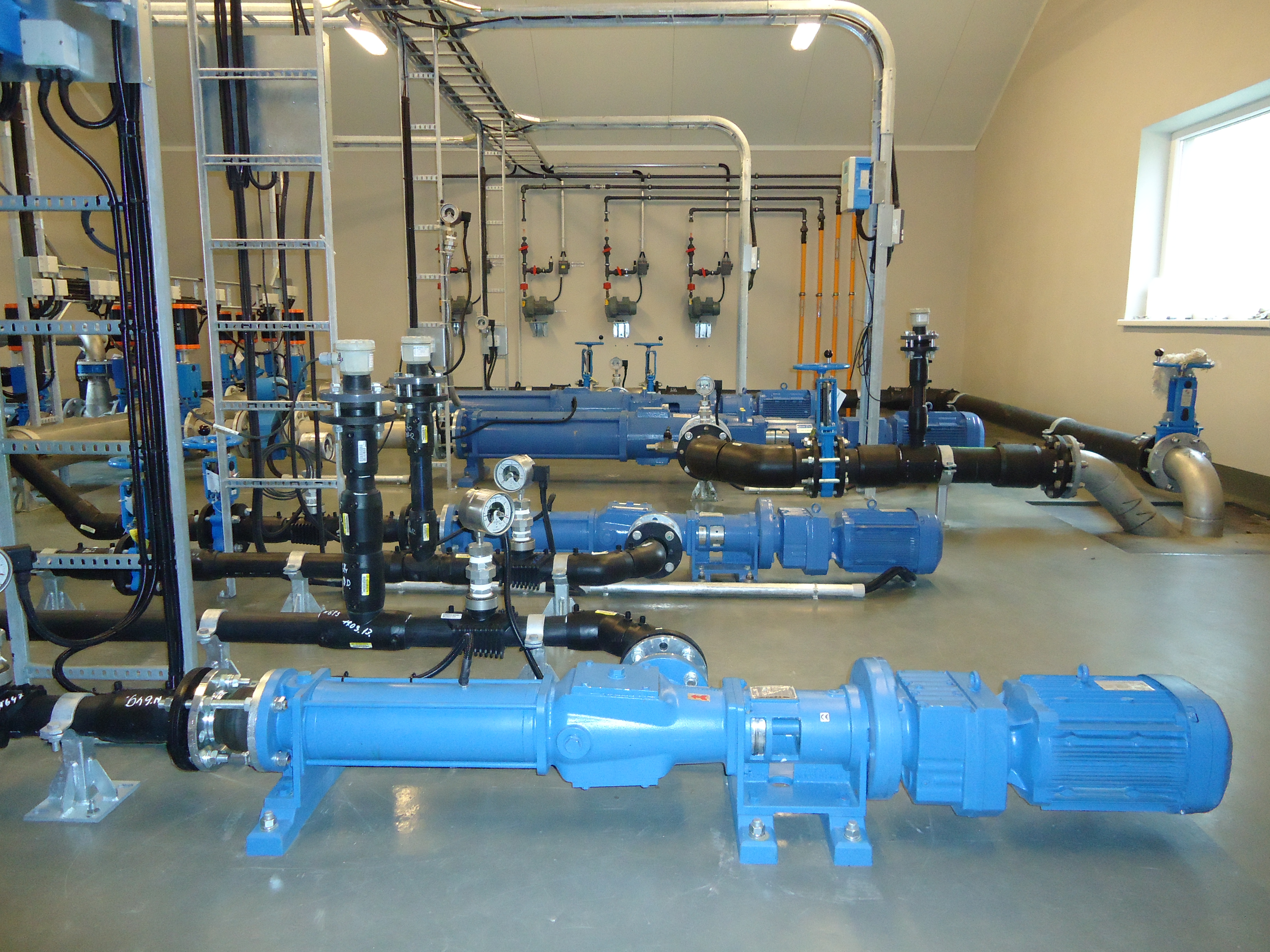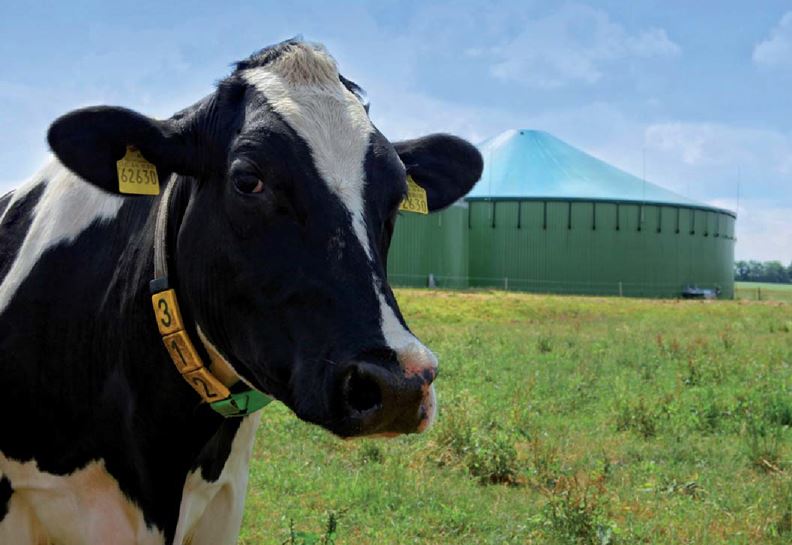Nature as a model
Anaerobic Digestion (AD) is a complex biochemical process involving a variety of microorganisms to produce biogas. The process is by no means homogeneous.
AD involves several distinct steps performed by unique microorganisms which need specific individual conditions for optimum biogas production. To facilitate this suggests a multi-stage process for the best outcome.
Conversely, to carry out the process in a single stage chamber will mean that the function of the various microorganisms cannot be optimised.
Our CENTRIGAS® takes nature as its model, similar to cow's stomach, by facilitating three separate process stages. The first stage provides ideal living conditions for hydrolysis and acidification processes, followed by methane production under optimal conditions in a separate fermenter.
The third stage is our post-fermentation storage. In this stage a small amount of high-quality biogas with high methane content is produced. This chamber can also act as additional storage volume.
Advantages of this multi-stage process are:
- high process reliability
- higher methane content and optimal energy production for a given feedstock
Agitator-less circulation system
Mechanical agitators present one of the biggest weaknesses of conventional biogas plants. Breakdown and malfunction are not uncommon, especially after prolonged operation. Repairs often require access inside the digester causing downtime and lost energy production; resulting in a negative impact on the busniess model.
Furthermore, mechanical agitators are by no means ideal for biological process mixing leading to:
- Shear forces disrupt biological structures
- Uneven stirring throughout the vessel
- The removal of floating decks is not so effective leading to problems with crusting
- Energy is wasted while the entire content of the fermenter is unnecessarily put into a circular motion, similar to stirring a tea cup
To avoid these disadvantages, Centrigas® adopts the more efficient and effective gas recirculation system.
The advantages are several. All moving and wearing parts are external to the fermenter and gas dome. Mixing effect of the vertical stream of bubbles is gentle yet effective in breaking up floating layers. Short-circuit flow from the inlet to outlet is avoided as a virtual "plug flow" is achieved.
The advantages at a glance:
- Maintenance-free and trouble-free circulating system
- Uniform substrate mixing and ideal living conditions for the bacteria
- Crust prevention

Integral construction
In addition to being multi-stage CENTRIGAS® offers the advantage of integrating all the essential process stages in a single structural unit arranged as concentric rings.
In the centre is the main fermenter (being the warmest to facilitate mesophilic process at 37-39 °C). This is suurrounded by an outer ring which facilitates post-fermentation and hydrolysis/acidificcation but which also assists to insulate the central core fermenter. A weather proof gas storage dome sits over the entire unit.
This compact and integral design has many advantages:
- Smaller footprint
- Heat loss and parasitic consumption of heat is reduced to a minimum. Experiences in the cold winters of Eastern Europe confirm this impressively.
- Being a single structure in place of several pots the plant concept adapts better to yard and landscape.
The advantages at a glance:
- Minimal heat loss
- Reliable gas production due to less temperature variation in the fermenter
- Saves space, fits well into the landscape







